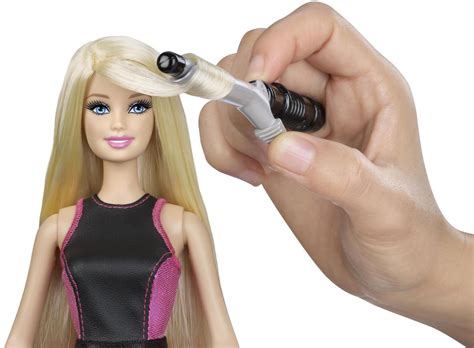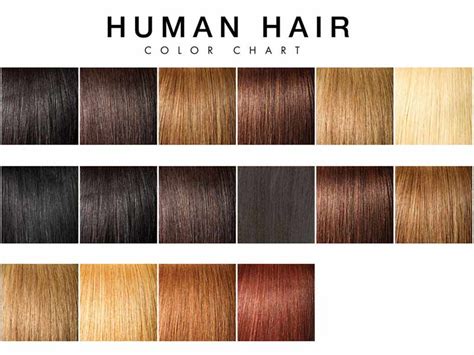Introduction
Human hair color is a captivating and diverse aspect of our physical appearance, serving as a distinctive characteristic that sets us apart. It is determined by the presence and distribution of melanin, a pigment produced by cells in hair follicles. The varying shades and hues of human hair, from the deepest black to the palest blonde, result from the complex interplay of different types of melanin and their concentrations. This article delves into the fascinating world of human hair color, exploring its scientific basis, genetics, and cultural significance.

Genetics of Hair Color
Hair color is primarily influenced by genetics, with specific genes determining the type and amount of melanin produced. The two main types of melanin that contribute to hair color are eumelanin and pheomelanin.
- Eumelanin: Responsible for brown and black hair colors.
- Pheomelanin: Produces red and blonde hair colors.
The relative ratios of these two pigments and their distribution within the hair shaft determine the resulting shade.
Distribution of Melanin
The distribution of melanin within the hair shaft is also crucial in determining hair color. Three main patterns of melanin distribution exist:
- Uniform distribution: Melanin is evenly distributed throughout the hair shaft, resulting in solid and consistent colors.
- Aggregated distribution: Melanin is clustered into larger clumps, creating a striated or banded appearance on the hair shaft. This pattern is characteristic of highlighted or streaked hair.
- Diffuse distribution: Melanin is dispersed in small, scattered granules, resulting in a more translucent or ashy appearance.
Cultural Significance of Hair Color
Human hair color has long held cultural and social significance in various societies around the world. Throughout history, certain hair colors have been associated with specific ethnicities, stereotypes, and social norms.
- In many cultures, darker hair colors such as black and brown have been perceived as dominant or powerful, while lighter hair colors like blonde have been associated with youthfulness and femininity.
- In certain religious traditions, hair color has played a symbolic role, with specific shades prescribed for members of different sects or orders.
- Hair color has also been used as a form of self-expression, with individuals dying their hair to achieve desired looks and conform to societal trends or personal preferences.
Hair Color Disorders
Certain genetic disorders can affect hair color, leading to unusual or abnormal hair pigmentation. Some of the most common hair color disorders include:
- Albinism: Characterized by a complete absence of melanin production, resulting in white hair, pale skin, and light-colored eyes.
- Melasma: A condition that causes dark patches or spots to appear on the skin, including the scalp, leading to uneven or mottled hair coloration.
- Vitiligo: An autoimmune disorder that disrupts melanin production, resulting in patches of white hair or skin.
Hair Color Research and Applications
Research into human hair color continues to advance our understanding of its biology and genetics. This research has led to the development of innovative applications in various fields:
- Forensic science: Hair color analysis plays a vital role in identifying individuals in criminal investigations.
- Cosmetology: Advancements in hair color technology have enabled the creation of a wide range of hair dyes and color treatments to enhance appearance and meet diverse preferences.
- Genetics and genealogy: Hair color can provide valuable insights into an individual’s genetic heritage and family history.
- Medical research: Studies on hair color disorders have contributed to a better understanding of genetic mutations and their effects on pigmentation.
Table 1: Hair Color Distribution and Appearance
| Melanin Distribution | Hair Color Appearance |
|---|---|
| Uniform | Solid, consistent color |
| Aggregated | Striated, banded appearance |
| Diffuse | Translucent, ashy appearance |
Table 2: Cultural Significance of Hair Color
| Culture | Hair Color Association |
|---|---|
| Ancient Egypt | Black hair: Power, divinity |
| Medieval Europe | Blonde hair: Youthfulness, beauty |
| East Asia | Black hair: Tradition, respectability |
| Modern Western culture | Hair color varies based on personal preference and fashion trends |
Table 3: Hair Color Disorders
| Disorder | Characteristics |
|---|---|
| Albinism | Absence of melanin production, white hair, pale skin |
| Melasma | Dark patches or spots on skin and scalp |
| Vitiligo | Patches of white hair or skin due to autoimmune response |
Table 4: Hair Color Research and Applications
| Field | Application |
|---|---|
| Forensic science | Identification through hair color analysis |
| Cosmetology | Development of hair dyes and color treatments |
| Genetics and genealogy | Insights into genetic heritage and family history |
| Medical research | Understanding genetic mutations and their effects on pigmentation |
Strategies for Managing Hair Color
- Maintain a healthy diet: A balanced diet rich in vitamins and minerals supports healthy hair growth and color.
- Protect hair from sun exposure: UV rays can damage hair and cause color fading. Use sunscreens or protective hair accessories to minimize sun exposure.
- Use color-protecting products: Shampoos, conditioners, and hair masks designed to protect hair color from fading can help maintain vibrant shades.
- Touch up roots as needed: To prevent noticeable contrast between newly grown hair and colored hair, touch up roots regularly.
- Consider hair color transformations gradually: Drastic hair color changes should be done in stages to avoid damage and allow hair to adjust.
Tips and Tricks for Enhancing Hair Color
- Experiment with different shades: Explore various hair color shades that complement your skin tone and personal style.
- Use highlighting and lowlighting techniques: Strategic placement of lighter and darker shades can add depth and dimension to hair color.
- Add shine to hair: Gloss treatments or hair oils can enhance hair’s natural shine and make colors appear more vibrant.
- Try color-correcting shampoos: Purple or blue shampoos can counteract unwanted yellow or brassy tones in highlighted or blonde hair.
- Condition hair regularly: Deep conditioning treatments help keep hair hydrated and prevent color fading.
Pros and Cons of Different Hair Color Techniques
| Technique | Pros | Cons |
|---|---|---|
| Permanent hair dye | Long-lasting color, covers gray hair | Can damage hair, requires regular touch-ups |
| Semi-permanent hair dye | Less damaging than permanent dye, lasts for several weeks | Fades gradually, may not cover gray hair completely |
| Temporary hair dye | No damage to hair, washes out easily | Does not last long, may not be suitable for all hair types |
Conclusion
Human hair color is a fascinating and diverse aspect of our physical appearance that has both genetic and cultural significance. Understanding the underlying mechanisms of hair color and its variations can help us appreciate the beauty and individuality of human diversity. Through advancements in hair color research and applications, we continue to expand our knowledge of this fascinating attribute and develop innovative ways to express ourselves and care for our hair.
